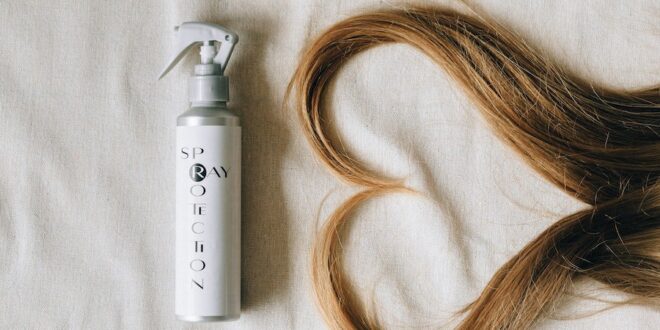Have you ever wondered just how strong human hair is? Well, probably not if you are just an average person.
However, some curious minds have conducted numerous studies and experiments to determine the strength of human hair.
And the results have been astonishing, revealing that human hair is surprisingly strong and resilient.
Therefore, if you want to know how strong your hair is, this article is for you. Later, we will discuss the science behind the strength of human hair and explore its unique properties.
From its composition to its ability to withstand external forces, you will learn the secrets that make human hair resilient and fragile simultaneously.
How Strong Is Human Hair
This might come as a surprise to many, but it’s backed by research. Research on human hair has established that human hair has a tensile strength ranging from 200 to 260 Megapascals (MPa), a measure similar to steel.
To put it in perspective, you could theoretically support the weight of an entire person using only 500 to 1000 strands of human hair. Additionally, it’s been found that keratin fibers can stretch up to 40 percent before reaching their breaking point.
Experiment On Comparison Of Human & Other Mammals
Driven by curiosity, a team of material scientists and engineers from the University of California, Berkeley, and the University of California, San Diego, in the US, studied how hair from different mammals compares.
Their investigation examined hair samples from different species, including humans, bears, boars, horses, capybaras, javelinas, giraffes, and elephants.
The diameter of these hairs ranged from approximately 60 μm in humans to more than 350 μm in elephants and giraffes.
Despite sharing the basic hair structure, the team discovered that their exact structure and diameter vary depending on their functionality.
One interesting observation came from the capybara and javelina samples. The javelina, resembling a pig native to Central and South America, has hair on its back that serves as a defensive mechanism.
Unlike the normal fibrillar structure found in other hairs, the cortex of javelina hair features a closed-cell foam-like formation that makes it stiffer, akin to a porcupine quill.
In contrast, the semi-aquatic capybara’s hair exhibited a distinct “twin” structure. This structure gave it an oval-shaped cross-section with a central groove that facilitates water runoff to allow the animal to dry fast.
The researchers found a clear correlation between tensile strength and the diameter of the hair. The tensile strength decreases with an increase in hair diameter. It means that thin hair from a child was stronger than thicker hair from an adult.
Further study under electron microscope showed that hairs exceeding 200 μm in diameter, such as those from boars, giraffes, and elephants, tended to fracture with a clean break.
In contrast, the finer hairs, such as those from humans, horses, and bears, exhibited a shearing pattern. Materials that show shearing capabilities are deemed tougher than those that undergo a normal fracture.
Wen Yang, an engineer at the University of California, San Diego, emphasized the potential implications of these findings.
“If we can create metals that have a hierarchical structure like that of hair, we could produce very strong materials, which could be used as rescue ropes and for constructions,” she said.
What Makes Human Hair So Strong?
The hierarchical structure of human hair is responsible for its strength. At the outermost layer is the cuticle, a protective shield comprising overlapping scales that guard the inner cortex.
The cortex is the core of the hair strand, composed of numerous small fibers interlinked by robust chemical bonds known as disulfide bridges.
These disulfide bridges form cross-links between sulfur atoms in adjacent protein chains, creating a sturdy and resilient framework.
Even tinier fibers are embedded within each of these small fibers within the cortex. This multi-tiered design ensures that human hair can withstand various external stresses and resist deformation.
The Structure of Human Hair
Human hair is divided into three distinct parts, each with unique characteristics and functions. They include:
Cuticle – The cuticle is the outermost layer of the hair shaft consisting of a series of overlapping, colorless, and transparent scales or shingle-like layers.
The cuticle serves as a protective barrier for the inner layers of the hair and prevents damage from external factors like UV radiation, chemicals, and physical abrasion. It also controls moisture movement in and out of the hair shaft.
Cortex – The cortex is the middle layer of the hair shaft and makes up most of the hair’s structure.
It comprises long, parallel strands of keratin protein responsible for the hair’s strength, elasticity, and color.
The cortex is where you find the pigments (melanin) that give hair its color. It also contains disulfide bonds that contribute to the overall strength and structure of the hair.
Medulla – The medulla is the innermost layer of the hair shaft and is not always present in all hair types.
It is a less dense and less organized region, often appearing as a hollow, central core. The medulla’s function in human hair is poorly understood; however, it helps control the body temperature in animals.
The medulla may be absent or very sparse in many people, especially those with fine or light-colored hair.
Composition Of Human Hair
Proteins (Keratin) – The predominant component of human hair is protein, specifically a fibrous and helical protein known as keratin.
Hair comprises 90% keratin, which forms from long chains of amino acids, particularly cysteine. These chains intertwine to create a stable and robust structure within the hair shaft.
Water – The moisture content of hair helps maintain the hair’s flexibility and prevent excessive dryness, which can lead to brittleness and breakage.
Hair can absorb and release moisture from the surrounding environment, impacting its behavior, such as curling or straightening in response to humidity levels.
Lipids – Lipids, including fatty acids and sebum, contribute to the hair’s overall health and appearance.
The scalp’s Sebaceous glands produce sebum, a natural oil that helps moisturize and protect the hair.
A healthy lipid balance on the scalp and along the hair shaft helps maintain the hair’s suppleness and imparts a healthy shine.
Melanin – Melanin is responsible for the coloration of human hair. It comes in two primary forms: eumelanin, which is responsible for black and brown hair colors, and pheomelanin, which is responsible for red and blonde hair colors.
The distribution and amount of melanin in the hair’s cortex determine its color. Beyond coloration, melanin provides some protection against the harmful effects of ultraviolet (UV) radiation from the sun.
Impact Of Chemical Treatment In Hair Strength
The use of chemical treatments and bleaching on hair can have detrimental effects on its overall health and appearance.
These procedures can modify the hair’s structure, resulting in a decreased ability to retain moisture and weakened strength. Consequently, hair may become dry, brittle, and more susceptible to breakage.
Moreover, chemical treatments can also compromise the integrity of the hair’s cuticles, leading to a loss of shine and brightness.
How Many Hair Are On The Human Head?
The number of hairs on an individual’s head varies depending on their hair color. On average, a person typically has between 90,000 and 150,000 hairs. It’s pretty safe to say that no one possesses more than a million hairs on their head.
Considering approximately eight billion people inhabit our planet, it’s highly probable that some individuals share the exact count of hairs on their heads.
Until, of course, one of them runs a comb through their hair, inevitably shedding a few strands. Following this occurrence, with a few additional strokes of the comb, it’s likely that another set of individuals will also have the same number of hairs as the aforementioned person.
Conclusion
How strong is human hair? Human hair is surprisingly strong and resilient. Despite its delicate appearance, hair strands have an impressive tensile strength that allows them to withstand significant force before breaking.
This strength is due to the protein structure of hair, specifically keratin, which forms a durable and flexible matrix.
The exact strength of human hair varies depending on factors such as thickness, length, and overall health, but on average, a single hair strand can support a weight of 100 grams.
However, it is essential to note that excessive styling, chemical treatments, and environmental factors can weaken hair over time.
 Being Human
Being Human




